I have a set of distances x=c*r/rs
array([ 0.09317335, 0.1863467 , 0.27952006, 0.37269341, 0.46586676,
0.55904011, 0.65221346, 0.74538682, 0.83856017, 0.93173352,
1.02490687, 1.11808022, 1.21125357, 1.30442693, 1.39760028,
1.49077363, 1.58394698, 1.67712033, 1.77029369, 1.86346704])
and number density (sigma)
array([ 9.56085037e+14, 5.13431506e+14, 3.26960286e+14,
2.27865084e+14, 1.68325130e+14, 1.29590176e+14,
1.02918831e+14, 8.37487042e+13, 6.94971037e+13,
5.86086377e+13, 5.00994710e+13, 4.33218850e+13,
3.78349864e+13, 3.33300619e+13, 2.95856349e+13,
2.64394232e+13, 2.37702922e+13, 2.14863249e+13,
1.95167455e+13, 1.78063354e+13])
which I have plotted to get the following graph. It is a log log plot.
I have a function 
which should fit my graph according to theory. I don't how to use scipy.opt.leastsquare to use the function and fit my graph. The parameters to fit are c and rs